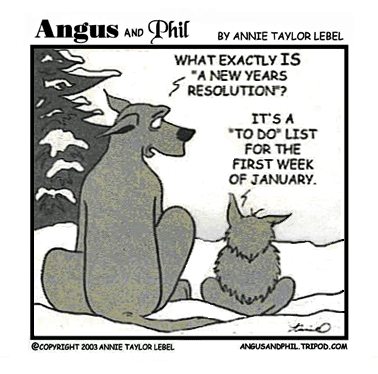
To stick to your New Year’s resolutions, you must find ways to become emotionally invested. Create practices, rituals, and structure to help you reach your goals. (Estimated reading time: 6 minutes)
“If you really want to do something, you’ll find a way. If you don’t, you’ll find an excuse.”
— Jim Rohn
When the clock strikes midnight on December 31st, the new year will bring with it a range of emotions: hope, fear, gratitude, excitement, or indifference.
Regardless of what we feel, we instinctively know that change will come with the new dawn—an energetic shift in the cosmic plane that spurs growth and evolution.
Such a momentous transition causes us to reflect on the previous year and instills a desire to wipe the slate clean and start afresh. Most people bookend their year by setting New Year’s resolutions—promises they make to themselves to improve their lives and change for the better.
Modern-day New Year’s resolutions are largely focused on health and personal growth. After indulging in the holiday season, many people want to lose a few pounds and eat healthier.
Others set resolutions to achieve financial goals such as paying off debt, finding new sources of income, or reaching relationship goals like getting out of a situationship to find healthy mutual love.
Most people start the year excited about making resolutions but find themselves losing enthusiasm as the weeks go by. Studies show that out of the 40% of people in the United States who set New Year’s resolutions, 80% break them by the first week of February, and only 8% end up achieving their goals.

Like many people, you may find it hard to stick to your New Year’s resolutions and consequently hit the breaks on your efforts. The cause could be circumstantial, like insufficient resources, or behavioral, like difficulty breaking old habits.
To make change last, we must integrate the rational part of the mind that likes to plan and organize, with our emotional mind that gives us insight through symbolic meaning and big-picture thinking.
As Carl Jung once said, “Symbols are the language of the soul that bypass the logical mind and communicate with us on a deeper level.”
This integration is best achieved by incorporating rituals. Age-old practices from the traditions of yoga, shamanism, and Kabbalah offer plenty of rituals to help us connect with our innermost beings and get a deeper understanding of our inner longings.
According to yogic teachings, rituals that are rich in meaning allow us to honor the process of letting go of the old and embracing the new on a deep cellular level. It impacts the “subtle body” – the energetic realm of imagery, dreams, and where the chakra system resides.

The transformation in consciousness we experience at this deep level results in powerful change in our physical world and the choices that we make. The rituals we partake in are catalysts in our transformation and healing. They empower us to be stewards of our evolution and growth.
These tradition-based rituals are great starting points, but you don’t have to limit your options. Develop and personalize rituals to suit your needs and sensibilities. Anything goes, as long as they have symbolic significance to you, and they speak to your subconscious mind and heart.
If you want to let go of old energies, engage in letting-go rituals such as cleaning out your closet and donating clothes. Want to make more money? Try prosperity rituals like placing a bowl of coins outside your front door, so it’s the first thing you see on January 1st. An intention-setting ritual for finding love could be as simple as lighting red candles and listening to romantic songs.
It takes a couple of weeks to rewire the brain and create new patterns of behavior. Continue with your rituals while also acting proactively. If you’re finding it difficult to stay committed, you might be facing common obstacles.
Besides a lack of rituals, here are five reasons you don’t stick to your New Year’s resolutions:
1. Lack of structure: Breaking old habits is not easy. You must make the process of ditching your old ways and replacing them with new ones as easy as possible by creating structure. Start by writing your resolutions down and formulate steps to carry out. Keep track of your progress, noting the times you follow through on your goals and any times you missed.
If you need motivation, get an accountability buddy or coach. Your environment should also support your objectives. For example, if you’re an emotional eater trying to lose weight, keep that pint of ice cream and chips out of your fridge and replace them with healthy snacks like nuts and fruits.
2. Resolutions that aren’t aligned with your core values: Many times, we set New Year’s resolutions that we think are good for us but aren’t necessarily what we really want to do – they don’t reflect our core values. The key to sticking with our resolutions is becoming emotionally invested. That happens when we pursue things that align with our values.
For instance, if one of your core values is freedom, you’ll be more committed to activities that liberate you, whether that’s working hard to establish your own business (financial freedom) or detaching yourself from unhealthy bonds (emotional freedom).
3. You’re unclear about your intentions (your “big why”): When setting a New Year’s resolution, we must take on a big picture perspective. We need to ask ourselves the intention behind it and what our “big why” is. Dig deep and ask yourself why you want to achieve your goal. Seeing the deeper purpose behind our actions gives it gravitas, and we’re more likely to maintain new habits. It can be a source of inspiration to keep pushing you forward every time you feel like giving up.
A person wanting to learn a new language because their friend is doing it won’t be as emotionally invested as someone who is learning it to volunteer in a country and mingle with the locals.
4. Your resolutions are overambitious and daunting: Just like any goal, you want to make sure that your New Year’s resolution is achievable. Many people quit because a resolution is too big and takes too much effort and sacrifice. A better approach is to step back and create a plan that’s easier on you. The proverbial advice to “eat an elephant one bite at a time” is the best strategy. Break your resolution down into smaller, achievable steps and create mini-milestones when you can celebrate your success.
If one of your resolutions is to read more books, but you have a hectic work schedule, instead of aiming to read two books a month, shoot for reading a few pages per day or listening to an audiobook during your commute to work.
5. You’re too focused on short-term rewards: Another trap that causes people to abandon their New Year’s resolution is expecting to see rewards immediately. A person too caught up in instant gratification is blind to the long-term wins of their actions. One way to combat this is by rewarding ourselves when we hit those mini-milestones.
If you’ve been working hard at the gym and start seeing signs of progress, treat yourself to a massage. Another way to do it is by visualizing yourself finally achieving what you want. Visualizing success, and really feeling it, makes it more real, tangible, and within reach.
Whether it’s the start of a new year or not, every day is full of promise and potential. Each morning we rise, we’re given an opportunity to be more, love more, and give more. The sun rising over the horizon is symbolic of our ascension process and the higher ideals we can aspire to.
All my best on your journey,
Seline

Question for you: What is one step you’re willing to take to stick to your New Year’s resolutions? How will you stay accountable?
Did you like this post? Sign up below, and I’ll send you more awesome posts like this one every week.

I learned years ago when I was living on my own for the first time that people often fail in meeting goals because they are too big and unrealistic. So I break my goals down into smaller pieces. Rather than saying I will lose 50 pounds in 6 months I say I will try to lose 2 pounds a week or something more manageable. Instead of saying I will start walking 5 miles a day to exercise i start with half a mile a day and build up from there. Smaller steps are always easier and more attainable and will keep you motivated for longer!